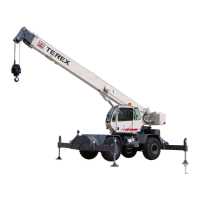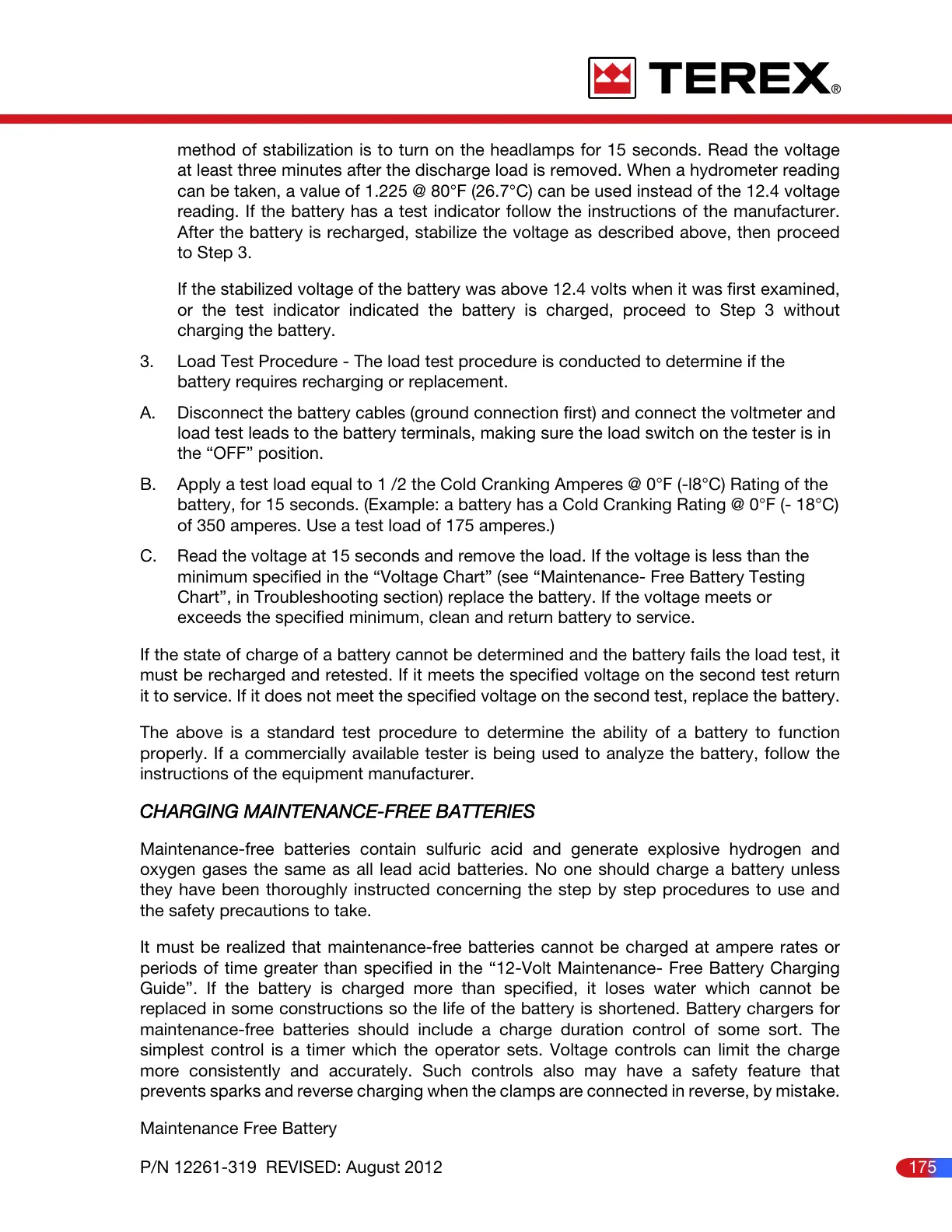method of stabilization is to turn on the headlamps for 15 seconds. Read the voltage
at least three minutes after the discharge load is removed. When a hydrometer reading
can be taken, a value of 1.225 @ 80°F (26.7°C) can be used instead of the 12.4 voltage
reading. If the battery has a test indicator follow the instructions of the manufacturer.
After the battery is recharged, stabilize the voltage as described above, then proceed
to Step 3.
If the stabilized voltage of the battery was above 12.4 volts when it was first examined,
or the test indicator indicated the battery is charged, proceed to Step 3 without
charging the battery.
3. Load Test Procedure - The load test procedure is conducted to determine if the
battery requires recharging or replacement.
A. Disconnect the battery cables (ground connection first) and connect the voltmeter and
load test leads to the battery terminals, making sure the load switch on the tester is in
the “OFF” position.
B. Apply a test load equal to 1 /2 the Cold Cranking Amperes @ 0°F (-l8°C) Rating of the
battery, for 15 seconds. (Example: a battery has a Cold Cranking Rating @ 0°F (- 18°C)
of 350 amperes. Use a test load of 175 amperes.)
C. Read the voltage at 15 seconds and remove the load. If the voltage is less than the
minimum specified in the “Voltage Chart” (see “Maintenance- Free Battery Testing
Chart”, in Troubleshooting section) replace the battery. If the voltage meets or
exceeds the specified minimum, clean and return battery to service.
If the state of charge of a battery cannot be determined and the battery fails the load test, it
must be recharged and retested. If it meets the specified voltage on the second test return
it to service. If it does not meet the specified voltage on the second test, replace the battery.
The above is a standard test procedure to determine the ability of a battery to function
properly. If a commercially available tester is being used to analyze the battery, follow the
instructions of the equipment manufacturer.
CHARGING MAINTENANCE-FREE BATTERIES
Maintenance-free batteries contain sulfuric acid and generate explosive hydrogen and
oxygen gases the same as all lead acid batteries. No one should charge a battery unless
they have been thoroughly instructed concerning the step by step procedures to use and
the safety precautions to take.
It must be realized that maintenance-free batteries cannot be charged at ampere rates or
periods of time greater than specified in the “12-Volt Maintenance- Free Battery Charging
Guide”. If the battery is charged more than specified, it loses water which cannot be
replaced in some constructions so the life of the battery is shortened. Battery chargers for
maintenance-free batteries should include a charge duration control of some sort. The
simplest control is a timer which the operator sets. Voltage controls can limit the charge
more consistently and accurately. Such controls also may have a safety feature that
prevents sparks and reverse charging when the clamps are connected in reverse, by mistake.
Maintenance Free Battery
175P/N 12261-319 REVISED: August 2012
Courtesy of Crane.Market

